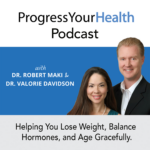

Endometriosis is a condition that affects many women. It is estimated that about 10% of females ages 15 to 49 are affected. I think this percentage of women with endometriosis is much higher than 10%. That is because the only sure way to be diagnosed with endometriosis is to have laparoscopic surgery.
There are many signs and symptoms of endometriosis, but they tend to overlap with other hormonal imbalances. Often it is confused with fibroids, ovarian cysts, and painful, heavy periods to name a few. And like I said, the only sure way to know is having surgery and finding endometriosis in the pelvic cavity.
What is Endometriosis?
Endometriosis is the lining of the uterus has seeded itself elsewhere in the body. The top lining of the uterus is called the endometrium. It is the cells of this lining (endometrium) that is found outside of the uterus. Common places endometriosis is found:
-Fallopian tubes: Sometimes it can cause scar tissue on the fallopian tubes reducing fertility or can contribute to an ectopic pregnancy (which is a health emergency).
Why is there Uterine Tissue Not in the Uterus?
There are many conflicting theories on why the endometrium lining that is supposed to be in the uterus is elsewhere in the pelvic cavity. A long-held theory is in utero when cells are developing; uterine cells are seeded in other areas outside of the uterus. A more recent theory is there is a retrograde of flow during a period. The blood backs up and out of the uterus causing uterine cells to plant themselves anywhere in the pelvic cavity.
New hypotheses are endometriosis is an extension of autoimmune and inflammatory diseases. But plenty of people do not have endometriosis. Why some do and not others? Like mentioned above it could be genetic, autoimmune, lifestyle, retrograde mechanical flow, etc.
The old-school theory of developing in utero has pretty much been put on the shelf. Endometriosis often comes back after laparoscopic surgery. Sometimes it comes back slightly, moderately or its back with a vengeance after surgery. Which is why many women with endometriosis have had more than one surgery.
The big question: What Does Endometriosis Feel Like?
Pain: Pain is the number symptom that women with endometriosis are seeking answers. There are several types of pain that are experienced in endometriosis. And the pain is no reflection of how much endometriosis they have in their pelvic cavity. Some women have minimal endometrial lining seeded outside of the uterus. But report debilitating pain. Other women have stage four endometriosis and have little to no pain. The only way to tell how much lining or endometriosis you have is by laparoscopic surgery. The pain is most commonly felt below the belly button to the top of the pubic bone. It might be all over this area or to the right or left depending on where the endometriosis tissue is located. Some women even report low back pain that is associated with endometriosis.
Types of Pain Associated with Endometriosis:
Associated Symptoms of Endometriosis:
There are many other symptoms that women feel with endometriosis. They can also have nausea, loss of appetite, fatigue. Not to mention the effect on the mood of the woman. It is very frustrating and disempowering to have to deal with these symptoms. And there are not a lot of options out there for endometriosis.
Those mainly are hormone therapy and surgeries. Surgeries being laparoscopic to find and remove the endometriosis lesions in the pelvic cavity. Even in some cases resorting a hysterectomy/oophorectomy (removal of uterus and ovaries). Every treatment plan for endometriosis is different for each woman. And what works for some, may not work for others. So if you are dealing with endometriosis make sure you work with a patient, functional medicine doctor that is going to tailor a treatment that fits for you.
Hopefully is podcast has been helpful. If you have any questions, please leave a comment below or send an email to [email protected]
The post What Does Endometriosis Feel Like? | PYHP 042 appeared first on .
Discover the common and unfamiliar symptoms that you might be experiencing. Get access to cases of real women with hormonal conditions.

In this episode, we discuss a question from Janice, a podcast listener’s question regarding the benefits of estrogen therapy for heart health. There is much evidence to show that estrogen has cardiovascular protective benefits. We wanted to discuss how estrogen benefits heart health and can help reduce the risk of cardiovascular disease. Janice’s Question: Are […]
In this episode, we talk about the benefits of estrogen on bones. A listener’s question (Alison) inspired this episode. Alison asked if taking vaginal biest has the same heart and bone effects that other estrogens and estrogen therapies have. So, we wanted to expand on estrogen’s role in helping keep bones strong and healthy. In […]
In this episode, we talk about hormone treatments for perimenopause and menopause. There is a vast distinction between perimenopause and menopause when it comes to treatment options. We often see women who are being treated for menopause when they are genuinely not in menopause. Meet Linda: Linda is a listener who sent us a question […]
Recently, Catherine posted a question on our website about Biest cream, and we knew this could interest our listeners. Biest is a combination of estriol and estradiol, one of the most common forms of estrogen therapy used in bio-identical hormone replacement. There are many doses, ratios, options, and methods of using Biest, so we thought […]
Welcome to the Progress Your Health Podcast! This is a podcast that helps you learn about balancing hormones, especially during perimenopause and menopause. We love hearing from our listeners. If you have a question, please visit our website and click Ask the Doctor a question. Let’s read Brigitte’s question! I have been listening and learning […]
In this episode, we talk about the difference between perimenopause and menopause. Both Dr. Maki and I (Dr. Davidson) have worked with women in perimenopause and menopause since 2004 and sometimes get a bit myopic and technical when it comes to explaining the differences. The other day, a patient of Dr Maki’s asked the question, […]